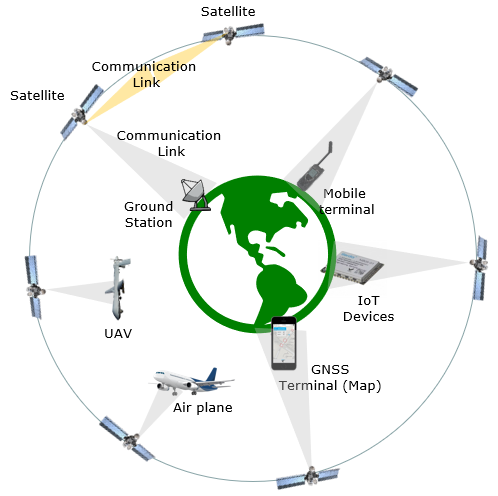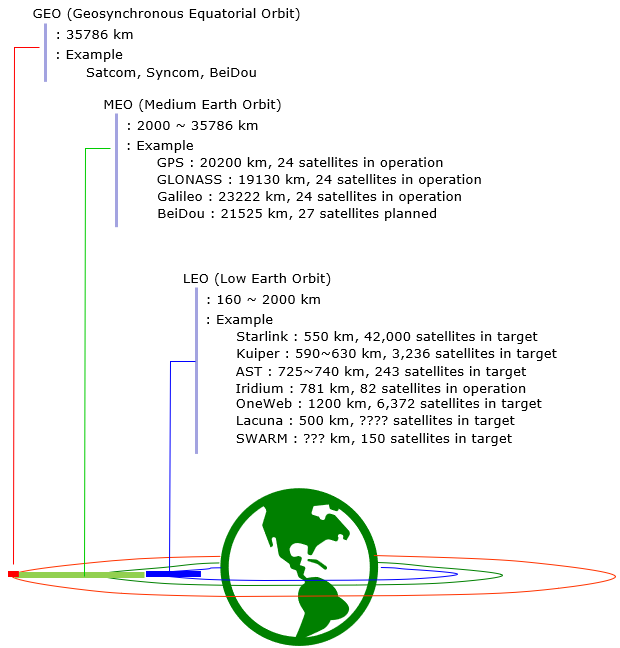|
Satellite Communication
Satellite communication has very long history starting in 1960s which is longer history than cellular communication that we use everyday. The application of satellite communication has been drastically expanding in recent years (as of 2021). Only a short list of widely used application is illustrated as below.
In early application, the satellite communication has mostly been done between satellites and ground stations which is fixed and usually with large antenna. But in recent application it has been evolved to enable the communication between satellites and small terminals (e.g, mobile terminal, IoT devices, GNSS terminal), and can cover airbone objects like UAV and Airplane
etc.

Following is list of topics on this note. I will just write them down in a short cheatsheet so that you can quickly look into it when you read other technical documents or watch youtube tech videos.
Communication Satellites are placed in various different orbits depending on its purpose. In general, as the orbit is farther away from the earth it can cover wider area with small number of the satellite, but it cause larger delay (latency). On the contrary, when the orbit is closer to the earth the delay (latency) gets shorter but the area covered by single satellite
gets smaller. As a result, it requires a lot of satellites to cover wider area on earth.
Following is some example of satellite communication system and orbit. In recent trends, most of wideband communication or low cost satellite systems are tend to be on Low Earth Orbit (LEO).

Followings are some examples of frequently used frequency bands for satellite communication. As low frequency bands gets saturated and the system provides wider bandwidth, the frequency gets higher and higher.
- L-Band (1-2 Ghz)
- S-Band (2-4 Ghz)
- C-Band (4-8 Ghz)
- X-Band (8-12 Ghz)
- Ku-Band (12-18 Ghz)
- Ka-Band (26-40 Ghz)
- V-band (40-75 Ghz)
- E-band (60-90 Ghz)
NOTE : Ka band overlaps 5G/NR FR2 (Frequency Range 2). Some of C band overlaps with 5G FR1 (e.g, 5G band 49, 79 etc). Refer to this page to check 5G frequency spectrum.
Well-Known Communication Satellites
Followings are some of the communication satellite system that I am personally interested in. These are mostly for wideband (like WiFi service), mobile communication and IoT applications.
YouTube
YouTube (in Korean)
Reference
|